What’s the Healthiest Cheese According to a Nutritionist? (Yep, There is Such a Thing!)
The healthiest cheese is real cheese. But which one comes out on top? The nutritionist is in the house to fill you in.Read on to find out.
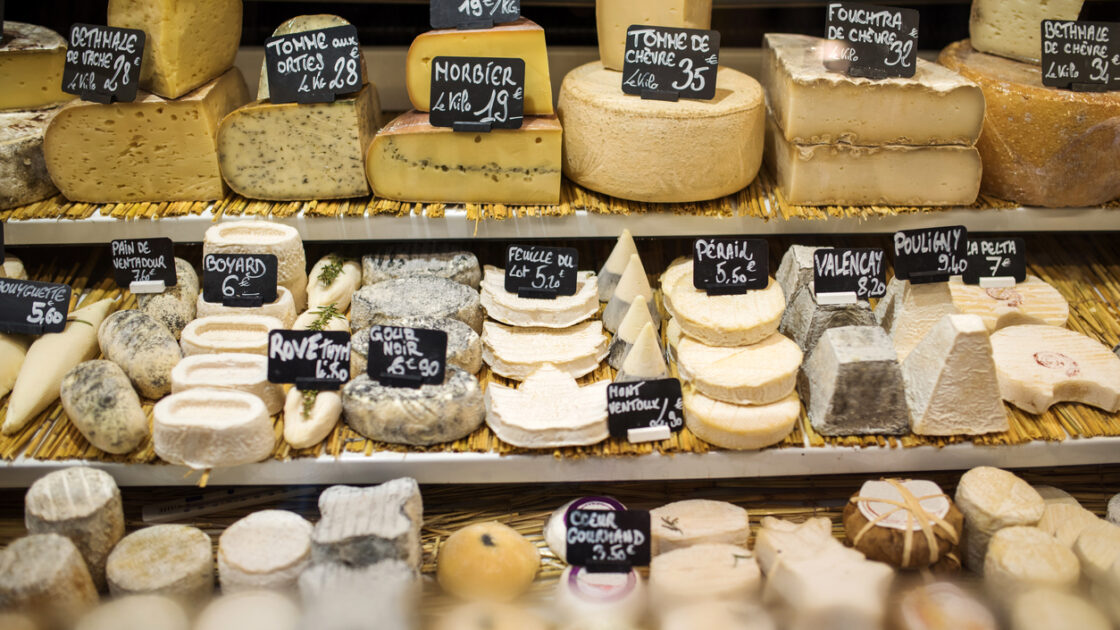
Whether it’s melted between two slices of bread, on a hot piece of pizza, sprinkled over a crisp salad, or nibbled alongside your favorite glass of organic wine, cheese is hard to beat. But what’s the healthiest cheese out there?
A serving of cheese is considered to be one ounce, or about the size of three standard dice. Within this serving (or, ahem, two), you’ll reap important nutrients including vitamins D and A along with certain B vitamins, calcium, phosphorus, zinc, potassium, and protein. As a fermented food, cheese supports gut health1 while boosting the immune system too. In moderation, cheese is a perfectly acceptable food to enjoy with your favorite meals.
Of course, we’re talking real cheese here, made from quality milk.
What’s the Worst Kind of Cheese for You?
Processed cheeses contain emulsifiers, extenders, weird ingredients, phosphates, and hydrogenated oils and should be avoided at all costs. As for those cans of cheese-like products… no, just no.
Cheesy Fermentation: Gut Health Goodness
Cheese is a staple in cultures all over the world, as before industrialization, fermented dairy products (cheese, kefir, yogurt) were common ways to keep dairy around for longer. After all, without pasteurization and refrigeration, milk quickly sours and separates. This is due to lacto-fermentation, where lactic acid-producing bacteria begin digesting both milk sugar (lactose) and milk protein (casein). After this occurs, milk is preserved from spoiling for several days or weeks. As cheese undergoes future fermentation, it can last for several months or years.
The fermentation of dairy results in numerous beneficial changes, including an increase in vitamins B and C. The process of fermenting dairy also helps to break down casein, a milk protein that many people cannot digest. According to Sally Fallon, author of Nourishing Traditions, culturing the dairy product restores many of the enzymes destroyed during pasteurization including lactase, which helps digest lactose or milk sugar, and numerous enzymes, which help the body to absorb calcium and other minerals. Lactase produced during the culturing process allows many people who are sensitive to fresh milk to tolerate fermented milk products, such as cream cheese, yogurt, kefir, whey, and cultured milk, cream, and cheese.
Going Raw with Cheese
Some of the healthiest cheese you can find is raw. These cheeses are made from raw milk that has not been pasteurized. Raw cheese contains an array of beneficial enzymes and nutrients and is therefore more easily digested than cheeses made from pasteurized milk.
According to Cathy Strange, the global cheese and specialty buyer for Whole Foods Market, raw milk has been “the go-to ingredient for cheeses for over a thousand years and right up to today and for good reason – flavor.” When milk is cooked, or pasteurized, many naturally occurring flavor-rich and gut-friendly enzymes are destroyed or denatured by the heat and the cheese loses some nuances in its flavor.
Raw cheese isn’t that scary or hard to find, either. Strange notes that you’ve probably nibbled on some raw varieties without even realizing it! For example, Parmigiano Reggiano can’t legally be called Parmigiano Reggiano unless it’s made from raw milk. You can purchase some raw milk cheese from an organic source at your farmers market or at health food stores, like Whole Foods Market or Sprouts.
Full Fat or Low Fat Cheese?
When it comes to choosing between low-fat and full-fat anything, always go full fat. Low-fat baked goods, dairy products, butters, nut butter, etc. have been stripped of their beneficial fats and are often pumped up with a host of strange ingredients instead including chemicals and artificial sugars to mimic the texture of the full-fat variety2. Look at full-fat foods as a special treat, and go all in.
Besides, the saturated fat found in cheeses isn’t so bad after all. A 2015 study3 found that people who eat at least eight servings full-fat dairy per day have a 23 percent lower risk of developing type 2 diabetes compared to people who eat one or fewer servings per day.
Full fat cheeses also contain a type of fatty acid known as conjugated linoleic acid (CLA). CLA has been shown to have numerous health benefits4 including anti-cancer, anti-diabetic, and anti-hypertensive properties.
Organic or Conventional Cheese?
Always go organic when making the decision to purchase conventional or organic dairy products. Fat carries the largest doses of the hormones and antibiotics used in non-organic livestock, which means that non-organic versions may be higher in these endocrine-disrupting compounds. Plus, one 2013 study published in PLOS ONE5 found that organic dairy products contain 62 percent more heart-healthy omega-3 fatty acids than conventional milk.
So the healthiest cheese out there? A cheese that is organic, raw, and easily digested. Here are a few of our cheesy favorites boasting some serious nutritious powers.
The Healthiest Cheese: A Nutritional Breakdown
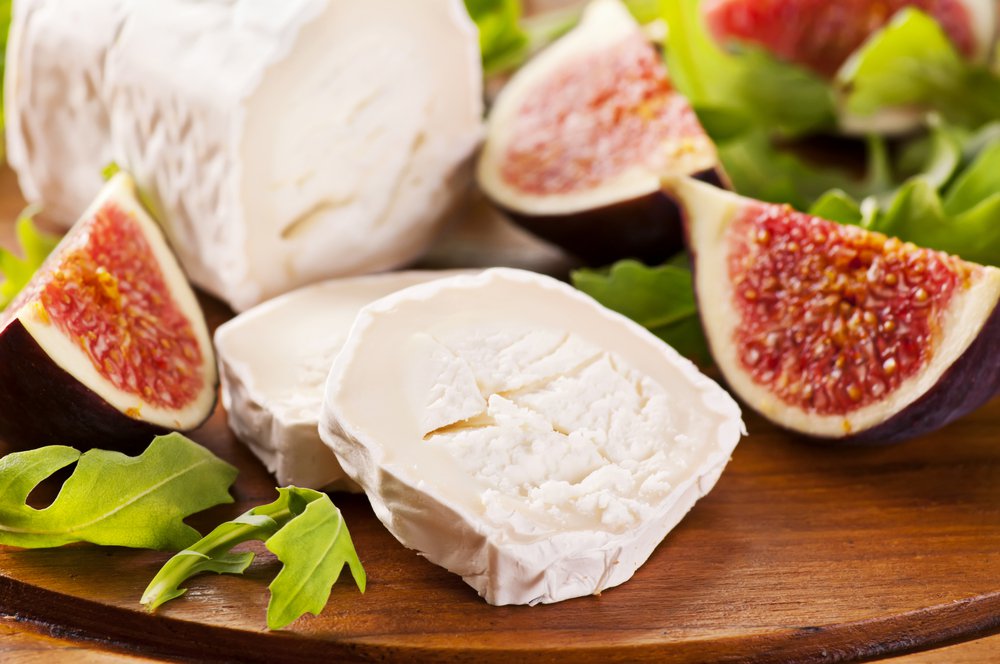
1. Goat Cheese, aka Chevre
1 ounce:
102 calories
6 grams saturated fat
6 grams protein
8% DV vitamin A
11% DV vitamin B2
83 mg calcium
Source of iron, phosphorus, potassium, vitamin B12 and D.
For those who cannot tolerate cow’s milk cheese products, goat cheese may be a suitable swap. The protein structure found in goat cheese is different from the milk of other animals, as the fat globules are smaller and easier to digest. And the casein in goat cheese doesn’t demonstrate the inflammatory effects associated with other kinds of dairy. In fact, one study6 suggests that goat milk, when used as the first kind introduced after breastfeeding, is less allergenic for babies than traditional cow’s milk.
Other research7 has also shown that as compared to cow’s milk, goat milk increases absorption of iron, improving bone formation and the bioavailability of certain minerals such as magnesium.
Goat cheese can be used like cream cheese on toast and bagels, stuffed into olives and peppers, and added to sauces and creamy soups. It’s also delicious crumbled into salads or stirred into grain dishes or in frittatas. It can even be made into sweet treats like cheesecake!
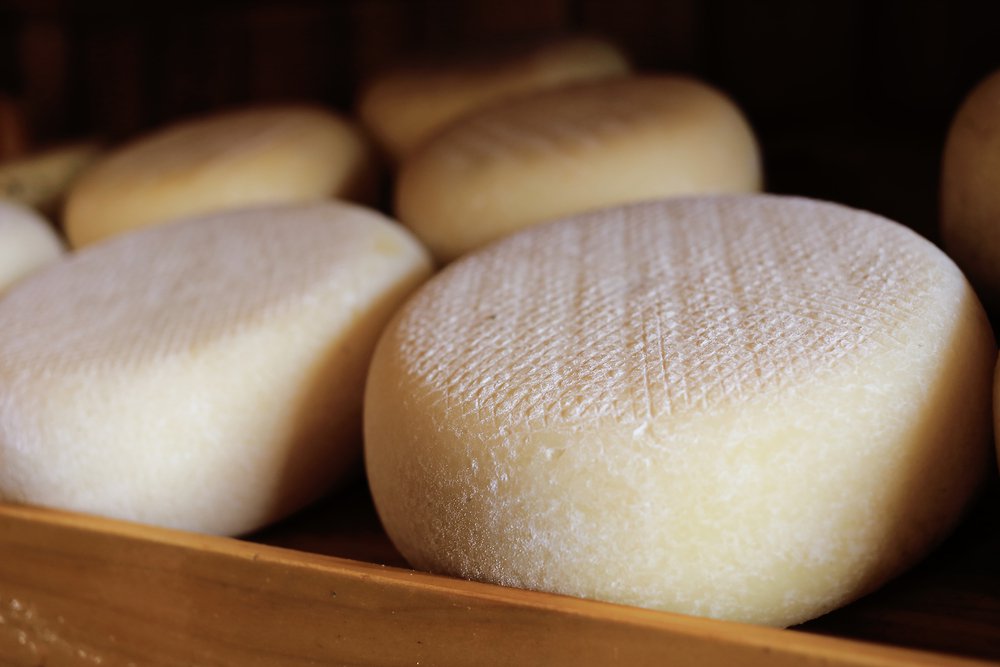
2. Pecorino Romano
1 ounce:
110 calories
7 g protein
7 g saturated fat
8% DV vitamin A
25% DV calcium
Also contains vitamins B2, niacin, B12, D, zinc, and phosphorus.
Pecorino Romano is a hard, sharp, salty Italian cheese made from sheep’s milk. Especially when made from a grass-fed source, this cheese is is rich in CLAs (conjugated linoleic acid), a type of omega-6 fatty acid. Consumption of these CLAs may be linked to lower BMIs and risks of diabetes, obesity, and inflammation, according to a a five-year study7. Studies8 show that the bioactive elements specifically found in sheep’s milk may have anti-cancer properties, as well.
Pecorino Romano is delicious grated onto pasta dishes and is the classic choice for cacio e pepe. With a rich, grassy, almost barnyardy aroma, it is powerful enough to be enjoyed in small, delicious quantities.
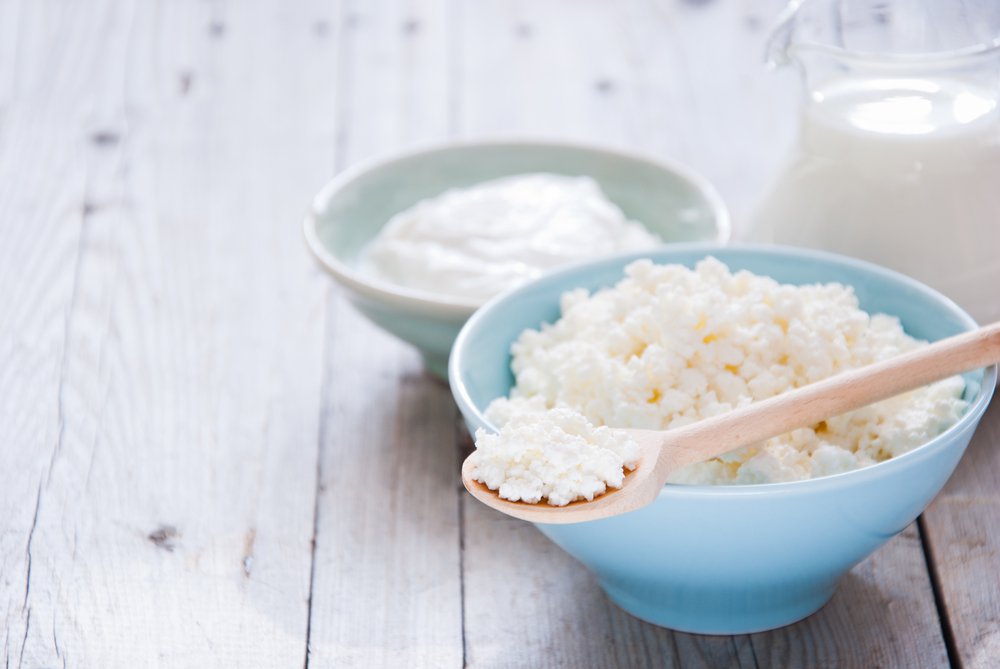
3. Cottage Cheese
1 ounce:
27 calories
1 g fat
3 g protein
1% DV vitamin A
44.5 mg phosphorus
4% DV selenium
Also contains calcium, vitamin B12, potassium, and sodium
Cottage cheese has long been considered a healthy whole food, but while some long-believed claims, such as the fact that cottage cheese can help promote bone health, have since been debunked, notably by one research review in the American Journal of Clinical Nutrition9, this cheese does still boast some health benefits, one of which is linked to its status as an acid-curd cheese.
Acid-curd cheeses are made by boiling and curdling milk with the help of an acidic medium, such as vinegar, lime juice, or lemon juice. As the milk boils it begins to curdle and form lumps of milk curds. These curds are then pressed and formed into large a big lump of cottage cheese. In fact, this process is so simple that you can even DIY your own cottage cheese at home. According to the American Journal of Clinical Nutrition study, acid-curd cheeses like cottage cheese are higher than many others in protein.
Cottage cheese is quite versatile. Pair it with granola, raisins, fresh fruit, nuts, or seeds for a tasty, filling breakfast or snack. It can also be used for pasta sauces, in baked dishes, on pancakes and waffles, and more.

4. Cheddar Cheese
1 Ounce:
115 calories
6.8 g protein
9.6 g fat, 5.49 g saturated
8% DV vitamin A
10% DV vitamin B12
19% DV calcium
19& DV phosphorus
15% DV selenium
Also contains vitamin B2 and B3, folate, sodium, and zinc.
This sharp (or extra-sharp) cheese originated in Great Britain in a village of the same name. Now, it’s the most popular cheese in the UK and the second most popular cheese in the states, behind mozzarella. This cheese can be a healthy choice, as long as you avoid processed versions made with artificial preservatives.
Real cheddar cheese is off-white or a mild orange if spices are added. Like other cheeses, cheddar boasts protein, vitamin A, a host of B vitamins, along with calcium for proper muscle and nerve function.
Cheddar cheese can be used in a variety of recipes. It works well in quiches, risotto, baked breads, on sandwiches, and more.

5. Feta cheese
1 ounce:
74 calories
6g fat, 4g saturated
4 g protein
2% DV vitamin A
14% DV riboflavin
8% DV vitamin B12
14% DV calcium
Also contains sodium, selenium, zinc, phosphorus, vitamin B6
Feta cheese is a tangy delight made from sheep or goat’s milk (or often a combination of the two). Synonymous with Mediterranean flavors, it’s versatile and good for you.
Nutritionally, feta cheese may promote cancer protective properties thanks to its levels of calcium and vitamin D, which have been shown10 to protect the body against certain types of cancer. Feta cheese also boats probiotics11 to keep the gut healthy and ample amounts of calcium for bone health.
Salty, creamy feta cheese is delicious stuffed in olives and spicy peppers, in grain and salad dishes, on pizza, in pasta, and paired with sweet elements like watermelon in this salad.

6. Mozzarella Cheese
1 ounce:
85 calories
6.3 g protein
6.3 g fat, 3.73g saturated
6% DV Vitamin A
27% V Vitamin B12
14% DV calcium
100 mg phosphorus
Also contains zinc, selenium, sodium, and iron
Mozzarella is a fresh cheese that originated from Southern Italy, where it is typically made with water buffalo milk. Stateside, it’s more frequently made with cow’s milk.
Like other cheeses, mozzarella boats gut-healthy probiotics, protein, fat, and nutrients to support whole body health, in moderation. Specifically, mozzarella is filled with energy producing B vitamins, including vitamin B12, which is supportive for red blood cell health.
Mozzarella cheese can (and should) be added to pasta, pizza, salads, grain dishes, baked dishes, and stuffed in hearty squashes for a filling vegetarian meal.
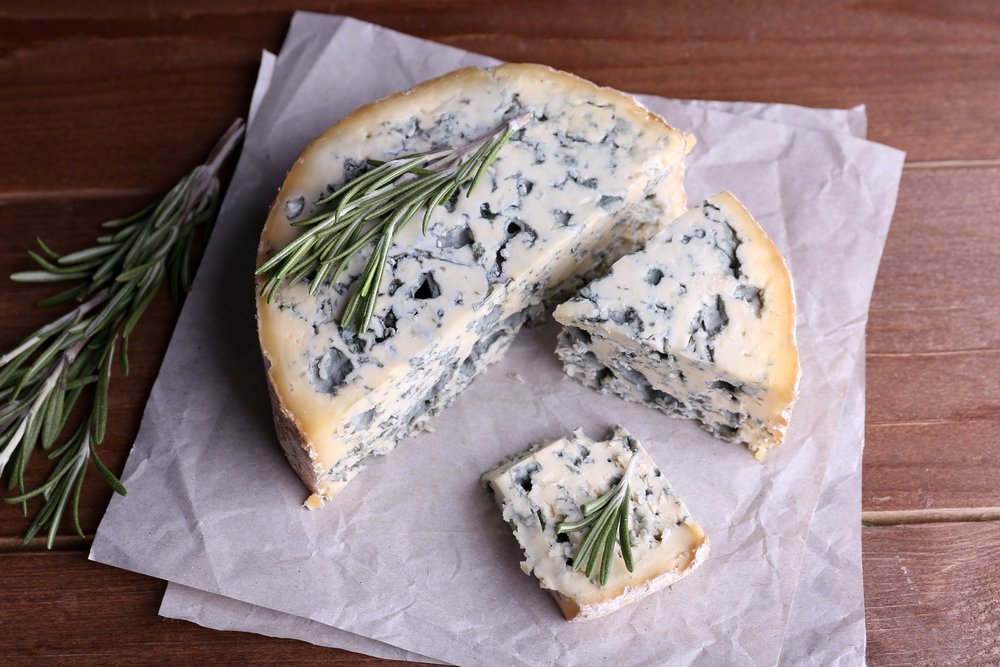
7. Blue Cheese
1 ounce:
100 calories
6.1 g protein
8.1 g fat, 5.29 saturated
6% DV vitamin A
10% DV vitamin B5
14% DV vitamin B12
15% DV calcium
22% DV sodium
16% DV phosphorus
Also contains selenium, zinc, folate, and vitamin B6.
Sharp and salty blue cheese is actually an umbrella classification to describe a host of different cheeses including sheep’s milk Roquefort and cow’s milk Gorgonzola, not to mention Danablu, Cabrales, and Stilton. These cheeses gets their name and vibrant color thanks to the addition of cultures of penicillium mold.
Blue cheese is filled with gut-friendly beneficial bacteria, satiating protein, and essentials minerals and vitamins. These cheeses may also promote anti-inflammatory properties12.
Blue cheese is delicious sprinkled over salads, pasta, in a tangy grilled cheese, and more.
Related On Organic Authority:
Grated Parmesan Cheese Actually Made of Wood Pulp Marketed as ‘100% Real Cheese’
What In The World Is Vegan Cheese Anyway? Can It Actually Replace ‘Real’ Cheese?
A Simple Guide to Making Cheese: You Can Do It!
Image of Various Cheeses via Shutterstock
This article was first published October 4, 2016 and republished February 25, 2019.
Sources
1. https://www.health.harvard.edu/staying-healthy/is-cheese-a-healthy-source-of-probiotics
2. https://thegymlasvegas.com/is-fat-free-cheese-worth-it-the-truth-about-full-fat-vs-non-fat-dairy/
3. https://academic.oup.com/ajcn/article/101/5/1065/4577562
4. http://www.sciencedirect.com/science/article/pii/S1871403X13001968
5. https://journals.plos.org/plosone/article?id=10.1371/journal.pone.0082429
6. https://www.ncbi.nlm.nih.gov/pubmed/15448424
7. http://www.prnewswire.com/news-releases/new-study-confirms-health-benefits-of-pecorino-romano-cheese-78322487.html
8. https://www.ncbi.nlm.nih.gov/pmc/articles/PMC8122369/
9. https://academic.oup.com/ajcn/article/72/3/681/4729345
10. https://www.ncbi.nlm.nih.gov/pubmed/9891258
11. https://www.ncbi.nlm.nih.gov/pubmed/11589551
12. http://www.livescience.com/25622-roquefort-cheese-health.html

